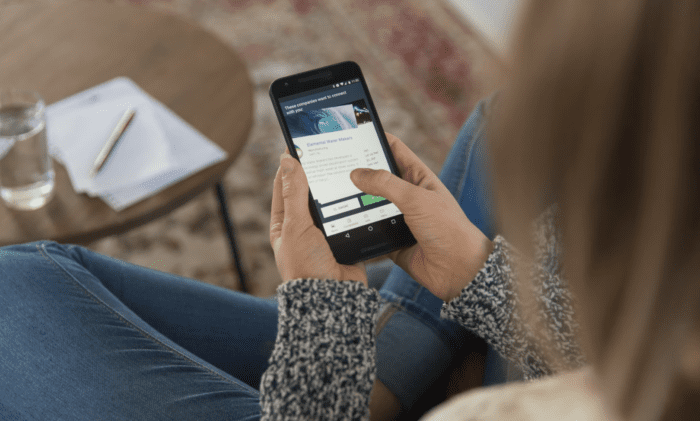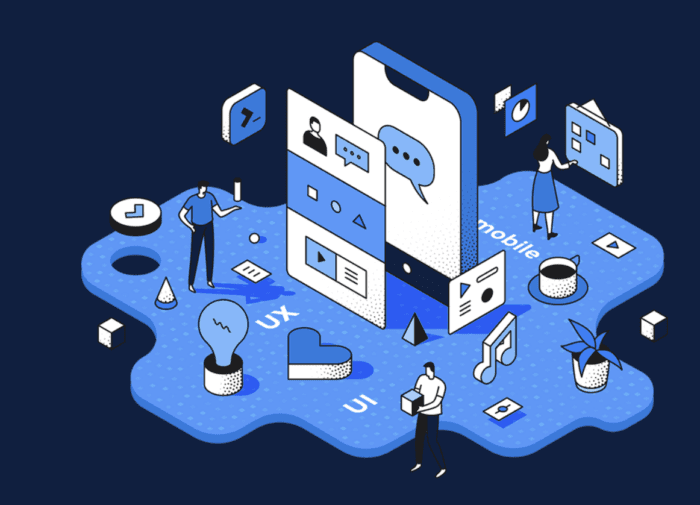One of the most challenging parts of making an app is creating a final product that truly represents the initial vision. This is especially true for complex project requirements, where you need to translate ideas into tangible functionality.
User stories simplify this process.
Whether you’re a developer, entrepreneur, business owner, or app development agency, understanding the power of user stories will ultimately help you deliver better software.
This in-depth guide will explain everything you need to know about user stories, including how they work, why they’re important, user story examples, and how to write user stories for mobile apps.
What is a User Story?
A user story describes what an app user wants to do within a software system to achieve something valuable. User stories are short, plain language descriptions of a goal from the end-user perspective.
User stories do not describe a specific software feature or business objective.
A good user story is short, and clearly articulates who the user is, what they want to do, and why they want to accomplish something.
User stories don’t need to be very descriptive. You can write a user story using informal language in a single sentence. Just include the following pattern:
- Role — “As a [user persona]”
- Feature — “I want to [complete an action]”
- Benefit — “So that I can [get some value]”
When you put this user story template together, you might get something like this:
As a project manager, I want to stay organized, so I can keep my entire team on track.
This could easily be an example of a user story for project management software.
There are lots of different ways to showcase user stories—and they don’t have to be packaged as some type of formal final project. You can even write user stories on post-it notes, index cards, or share them digitally with your project team.

Why Are User Stories So Important For a Software Development Team?
User stories have become crucial for agile software development.
Before agile user stories were implemented, teams would spend weeks writing highly detailed requirements and specifications for a given software project. But there’s a disconnect here in the language used by programmers and developers compared to the language used by the general public. So there would often be confusion among stakeholders involved with the project.
Without an agile user story, the specifications would look something like this:
- The app should do [this]
- The app will do [that]
- The feature will complete [something else]
But this type of direction is not helpful. You end up with long paragraphs of style details that many people working on the project won’t read or understand. Even the developers would skip over these, as they would instead look to start writing code as soon as possible.
User stories changed everything.
Today, user stories are known as the smallest unit for an agile framework. They can easily be added into different parts of one sprint to another within agile development.

Some of the top benefits of user stories include:
- Focusing on the user — Using a checklist or to-do list will keep a project team task-oriented. But by following user stories, it keeps everyone concentrated on solving problems for the app users.
- Promoting collaboration — User stories help define your end goals. This makes it much easier for teams to collaboratively decide the best route to take, ensuring that the end user’s needs will be best served.
- Driving creativity — Instead of using uninspiring tasks or objectives to define the project, user stories encourage everyone to let their creative juices flow. This inspires critical thinking and problem solving based on user needs.
- Building momentum — Each time a new user story gets achieved, the team feels a sense of accomplishment. These small wins help build momentum throughout the entire project, so the final product doesn’t feel like an insurmountable mountain to climb.
While user stories can be used for any type of product or project management initiative, they work great for application development.
Key Elements of a Great User Story
The key components of a great user story can best be described by the acronym INVEST. This acronym was first coined by Bill Wake, an expert in the field of extreme programming and agile project development.
INVEST has become the gold standard for defining success with user stories ever since. Let’s take a closer look at each part below:
Independent
Every user story must be treated as a single component within the whole project.
This means that teams should be able to work on each story in any order, without any type of co-dependency from one user story to another. There should not be any overlap between stories, as this adds redundancy and confusion.
If any user stories are dependent on each other, it usually means that one can be omitted—whichever is less valuable.
Negotiable
Creating a user story relies on collaboration between clients, designers, programmers, and stakeholders. It starts with a conversation.
In a perfect world, everyone will be on the same page with the story—although that’s rarely the case. Stories should be written in a way so that the priority, project requirements, and scope can easily be changed. This aligns with other principles of agile project management.
Valuable
Value is arguably the most important element of a user story.
If the story isn’t adding value to the end-user, eliminate it. Mobile apps must be designed to add value, and every story must be written keeping this concept top of mind.
Estimable
Priority is another important aspect of user stories.
Each story should be sized appropriately in a way that defines its priority level. High-value features with a long development process might not always get the highest level of priority in the development timeline. In some cases, it’s better to knock out quick wins and complete other stories first.
Small
Every user story should be looked at as a small block of work within the larger project.
The exact size of the task or story depends on the project management method you’re using. Sometimes a story can be completed in a single sprint. Other times they could take longer.
For agile methodologies, stories shouldn’t take more than three or four days of work.
Additional Reading: Project Management Methodologies For Mobile App Development
Testable
When a story is complete, it should be tested for the product. This ensures that every user story fulfills its acceptance criteria, which varies by the project.

How to Write User Stories For Your Mobile App
Now that you understand what’s required of a good user story, it’s time to start creating user stories for your app. Follow the simple steps below to get started.
Identify Different User Personas
The first step of writing user stories is defining the types of users who will use your mobile application. This is different from identifying the target audience.
A user persona describes what the person does when they’re connected to the app. It’s even possible that a single user could have multiple associations when using the product.
For example, let’s look at an app that everyone is familiar with—YouTube.
Someone might use YouTube for educational purposes and learning new skills. But that same exact person could also use the app for entertainment. The user story for each of these scenarios would have different personas.

Establish Goals For Different User Types
Now you should have a list of different user personas. For each persona, you need to define the goals for the end-user in your user stories. Think about why they’re using the mobile application.
What goal will they gain by interacting with the app?
Let’s stick with the YouTube user story example.
The educational user’s goal might be finding the most informative video on a particular subject. Where an entertainment user’s goal might be discovering a closely related video recommendation upon completion of another.
This will lay the groundwork for your software features.
Define the “What” and “Why”
You’ve already answered the “who” of your user stories. Now it’s time to answer the “what” and “why” with user story mapping.
User stories typically follow these guidelines:
- What value is a feature going to provide the end-user?
- Why does this specific type of user want to use the feature?
If you can’t answer the what and why, then you probably need to reevaluate the user story and its purpose within your mobile app.
Define the Acceptance Criteria
We briefly talked about the acceptance criteria earlier in the “testable” part of the INVEST acronym for user story key elements.
What exactly is the acceptance criteria?
Think of your user stories like any other story—it must be logical to make sense. Look back at the what and why, and answer it with “how.”
The acceptance criteria explains exactly how you’re going to deliver value to the other. You’ll answer this without getting into the intricacies of application development (this comes later in the process). But you’re going to use your imagination to play out how the story unfolds.
For example, you might say that a user could press a button to automatically share a location with their friends. Or maybe they need to perform a specific gesture to confirm their order before finalizing the checkout process.

User Story Examples
Let’s take a closer look at some examples of user stories that you can use as a template or inspiration:
- As a mobile commerce customer, I want a shopping cart button, so I can easily store items that I’m interested in purchasing.
- As a dry cleaning customer, I want to receive a push notification when my order is done, so I can pick it up right away.
- As a student, I want to invite my classmates to download the app, so we can work together on a project.
- As a manager, I want an option for anonymous feedback, so my employees feel comfortable sharing information with me.
- As an HR rep, I want to generate a report on employee feedback, so I can understand which departments need better training materials.
- As a basketball player, I want a court reservation feature, so I can book a private time to practice at the gym.
By using a natural language description, like the examples above, a user story helps everyone understand the goal of a particular initiative within the app.

Pro Tips and Best Practices for Writing User Stories
Before we finish up, I want to leave you with some proven tips for success when you’re writing user stories. Keep these in mind as you’re going through the steps described earlier in this guide:
- Always write the user story from the user’s perspective.
- Keep the description simple. You can always add smaller user stories later for context.
- Stay organized with a user story map so you can see the big picture of your backlog.
- Create user stories before you start worrying about product features.
- Use the stories as inspiration for your mobile app features.
- Encourage creativity and collaborative brainstorming from your development teams.
- Confirm the need for a feature before development begins.
- Use the user stories to estimate tasks to ensure your development team members can handle the workload.
- If you’re stuck, you can start with “epics.” These are larger user stories that can eventually be broken down into smaller stories.
- Keep everything simple, concise, and in terms that everyone can understand.
- Continue to refine the stories until they’re ready.
- Keep your stories in a place where they’re easily accessible and visible to every team member.
- Don’t rely on user stories alone to create an app.

Final Thoughts
User stories describe the value given to a user when they want to perform an action within your app.
Start by identifying the user personas. Then establish goals for each persona. User stories written down should answer the “what” and “why” related to each persona. Then you can use those questions to define the acceptance criteria.
Keep the INVEST acronym in mind as you’re writing user stories.
You can follow the steps in this guide along with the user story examples as inspiration for getting started.